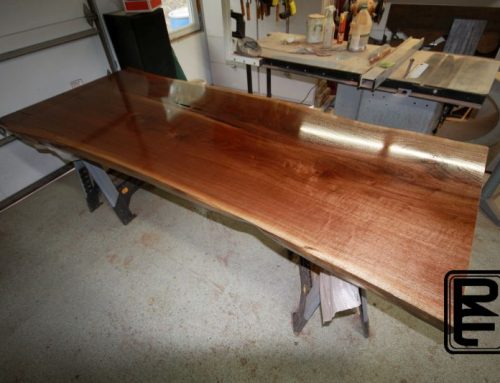I often get emails or calls from interested parties about the process of building our natural live edge furniture. In fact, in the last month I spoke with 3 individuals who inquired about raw walnut slab purchases with the intention of starting a natural edge furniture business like Refined Elements. When I receive this type of call, I always ask about their motivation and interests before providing them with my insights and experiences. Sadly, the typical response has little to do with the “love of the game”, but it is centered around the opportunity to sell $10,000 – $20,000 furniture pieces in only a matter of months. If only it were that simple and uninspiring, Refined Elements would be in another line of work or at least I’d back in the biotech industry. But these recent calls made me ponder a few things. What characteristics should make a natural edge furniture, such as a dining table, valuable or considered high-end in the marketplace? To answer this, let’s go back to those inquires and intentions to start a business selling high-end furniture.
My first bit of advice is always a warning that the level of dedication and plain physical work can be quite daunting. For one, I would honestly hate for anyone to spend $2000+ dollars on a slab only to have it sit or be wasted due to inexperience. Commonly I will ask them a few basic questions:
1) Have you ever tried to flip over a 40″+ wide hardwood slab that can initially weigh 400-500+ lbs?
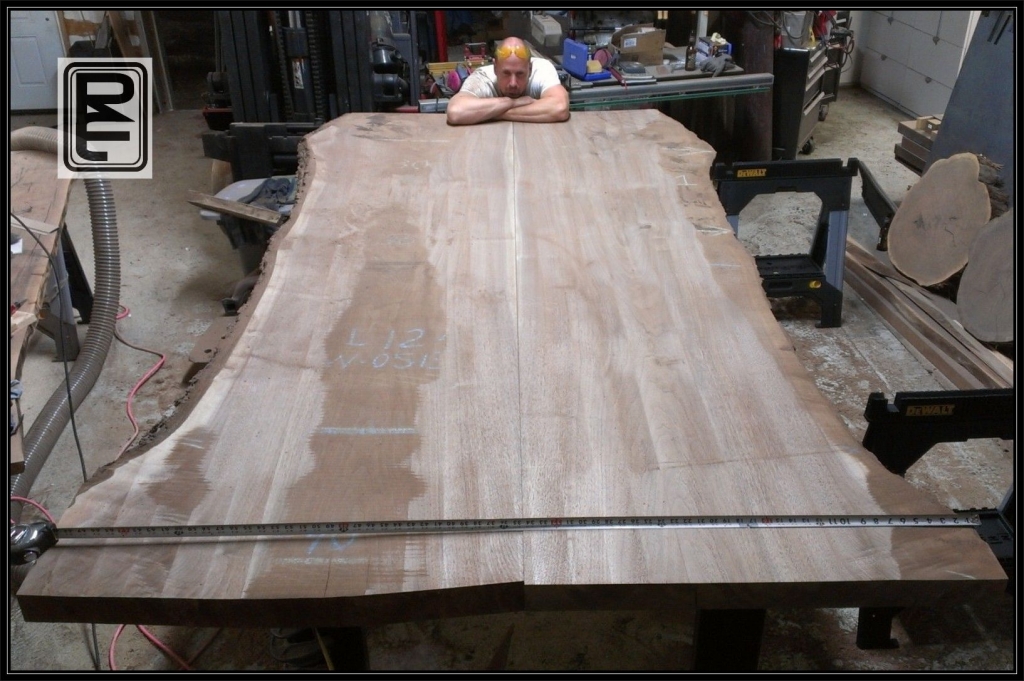
Greg, enjoying a moment of utter silence with this 65″ wide bookmatch walnut set. The joining is critical to the early life of the table. It takes patience before the right lines show themselves to the human eye. We usually stare, mark, stare, re-check, re-mark, stare, etc for over an hour before committing, mortising & joining.
Basically to build these things properly and not risk physical harm, you really do need a team. And a physically strong team at that, but it honestly is NOT about physical strength. Every successful business in the world today was at least initially made up of a group of individuals, who then developed a bond, shared ideas, formed common goals, and leveraged their strengths to form a remarkable team. A team with a shared vision and unyielding commitment to one another, their customers, and the products or services they develop. At Refined Elements, I’m proud have have gathered such a team with an immense focus on family values. We may not be housed in a fancy building in Seattle or Brooklyn but we are real craftsman with callused hands and dirty boots. Creative and artistic craftsman with an immense love for what we do and what what stand for.
2) Ever sorted through 10,000 lbs of slabs in order to find the right match for a particular client?
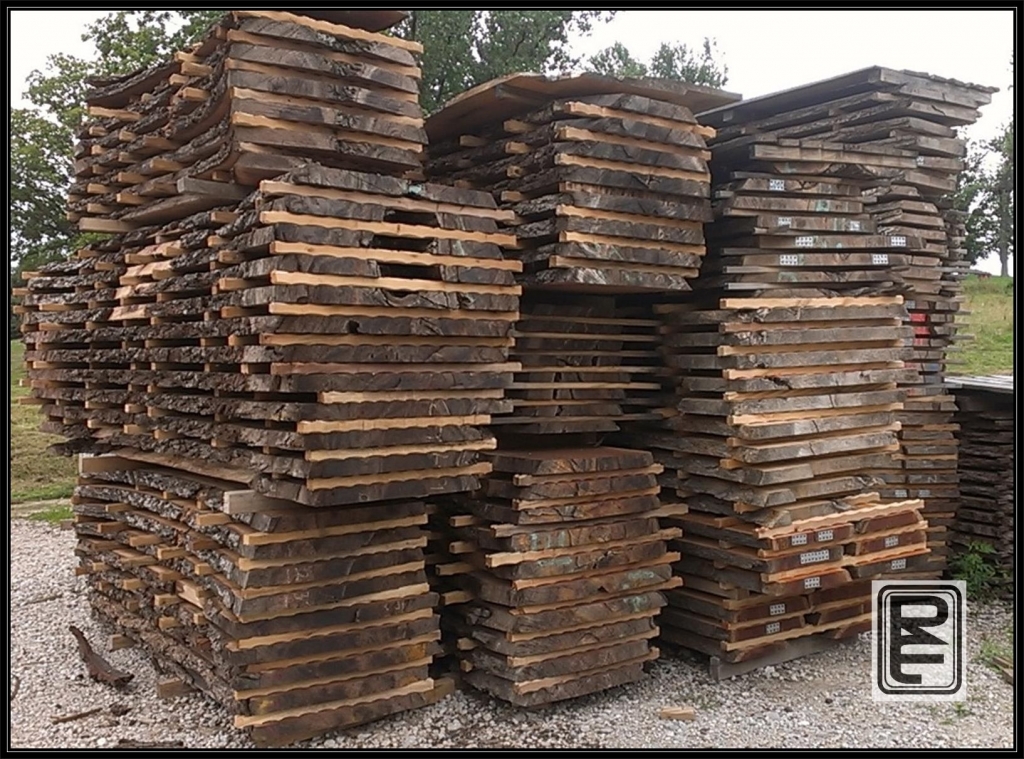
One of the greatest things about live edge furniture is that no two slabs are the same. Every piece is a fingerprint. To do it correctly, you just don’t grab a slab from the top and assign it to the next project. We carefully match the fingerprint to the person or idea. Often this requires sorting through literally 10,000+ lbs of inventory. We are reaching into the soul of the wood with a purpose.
I’ve started to post some YouTube videos which I will eventually add as video blogs on this website. The one thing I’ve come to realize is a continually focus on “relationships”. I don’t have to tell how important relationships are to happiness and success in one’s life. At Refined Elements it is not just about maker-to-maker or maker-to-customer relationships, it is about relationships with our materials. How can you have a relationship with an inanimate object? All our wood slabs were once living and thriving parts of a tree. Do you completely lose the essence of someone’s soul or personality at the time of death? We don’t believe so. And our relationship with our materials is no different. Each has a personality and a soul that is yearning to be re-vitalized. This is our job and we take is seriously.
3) Do you know how to look at the patterns and even voids in a raw slab to maximize the physical characteristics each piece has the potential to offer ?

A perfect match, may appear easy at the surface but your mistakes don’t show until it is already too late. But if done correctly, the results are simply remarkable. This is why we stare into the soul of our wood for hours over the course of a single project.
When I run into a client who is expecting or even demanding a perfectly uniform and flawless wood surface, my first reaction is “ahhhhh, RUN”! Granted, following through on that gut reaction would be a terrible business choice. I quickly come to my senses and open myself up to an opportunity to provide insight, education and a look into the passion that drives the culture of Refined Elements. I would say that 75% of our clients are already well educated on the subject of live edge or sustainable furniture, which makes my job easy. The remaining 25% need a push in the right direction or at least an honest recommendation that they are better suited to look at more traditional styles of furniture given their personality mismatch. There is a reason why our works of art are commonly called natural edge furniture but certain people have never physically witnessed one of these tables. Are they full of defects or full of character? It takes a keen eye, years of experience and one being harmonized with the wood before you can maximize the potential lying under a rough sawn wood slab. If you are simply walking the repetitious path of joining, sanding, and finishing then it is unlikely you are creating a valuable work of art. It literally takes hours of just sitting, observing, thinking, and collaborating with fellow makers before the hidden beauty is maximized.
4) Have you worked with a variety of finishes? Are you familiar with the different application techniques and how they can influence the end appearance?
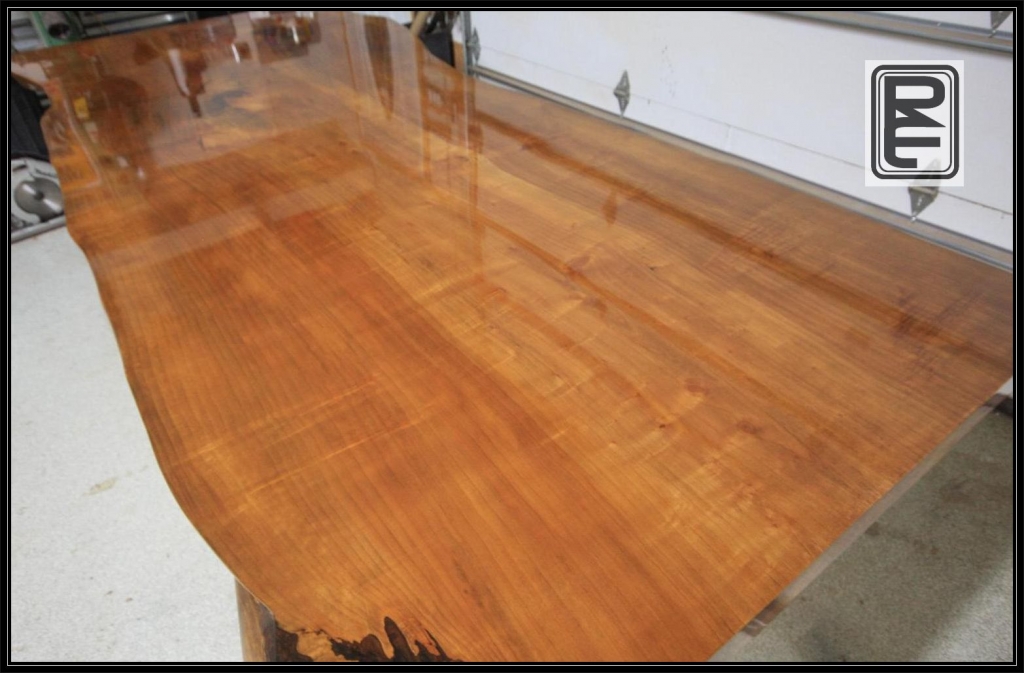
We typically don’t recommend high gloss finishes as they show scratches more readily. However, this client desired a high gloss look. Due to this customer requirement, we modified the blend of our proprietary finish and changed our application process in order to achieve the best possible outcome. We are always seeking maximum clarity and for a high-gloss finish it is imperative the surface is mirror smooth and additive free. The one thing we NEVER do is add satin additives to control the sheen of our finishes. This will only “muddy” or “cloudy” the finish, hindering the natural beauty of the wood. The maker should be capable of endless finishes depending on the requirements and goals.
I feel strongly that one of the biggest measures of a truly fine craftsman and high monetary value of furniture is the finish. Not only does it drastically impact the beautification of the wood, but it also influences the long-term appearance, required care & maintenance schedules. There is not a perfect finish and one finish doesn’t apply to all. First, you must understand the use environment. Second, you must understand the desired appearance. Thirdly, you must understand the willingness of a customer to meet recommended maintenance schedules. Most importantly, you must be well versed across a wide variety of finish options and application techniques in order to achieve the desired end result and properly educate your customers on the advantages or disadvantages of your finishes of choice.
5) Do you know how to properly flatten or plane a 48″ wide dried slab in order to waste the least amount of material and offer the biggest return to a customer?
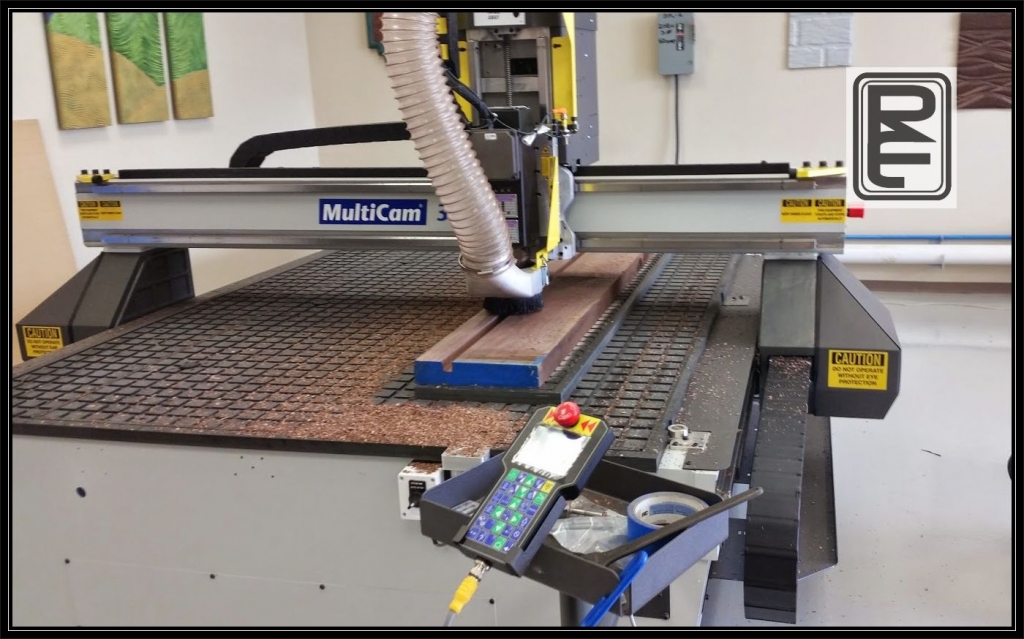
All our slabs are CNC planed to achieve consistently flat tops. Could we do it by hand? Yes, but would that make any sense to invest our customer’s money in manually planing operations? We would rather invest that labor into other areas of furniture production such as our fabricated solid bronze bases or our remarkable finishes or our joinery. We balance modern technology with traditional woodworking methods. This is one of the main reason why our tables are typically of higher quality, yet, more affordable than many of our better known competitors.
After years of experience and also some general development work, we’ve developed a process that maximizes the thickness of a table top. Some people may not realize this but when a custom furniture piece is quoted, the maker is factoring the cost in rough thickness form. For example, commonly we start with 10/4 or 2.5″ slabs. These slabs must be surfaced. There are easier ways and harder ways to achieve a flat surface. Our process is more involved, but it provides a thicker finish top than most anyone else in our line of work. Generally, we can produce a perfect flat top and only remove 1/4″-3/8″ off the thickness of a slab. We generally sell 20-30 slabs a year to fellow woodworkers, and I have yet to see a single woodworker achieve our final thicknesses. So at that end of the day, we provide a bigger return our on customer’s furniture investment. Same is true of our bases but that’s for another blog.
6) Do you know how to address stabilization issues in the immediate future and 10, 2o or even 30 years from today? Do you understand wood movement and especially the coefficient of movement in wood across each species?
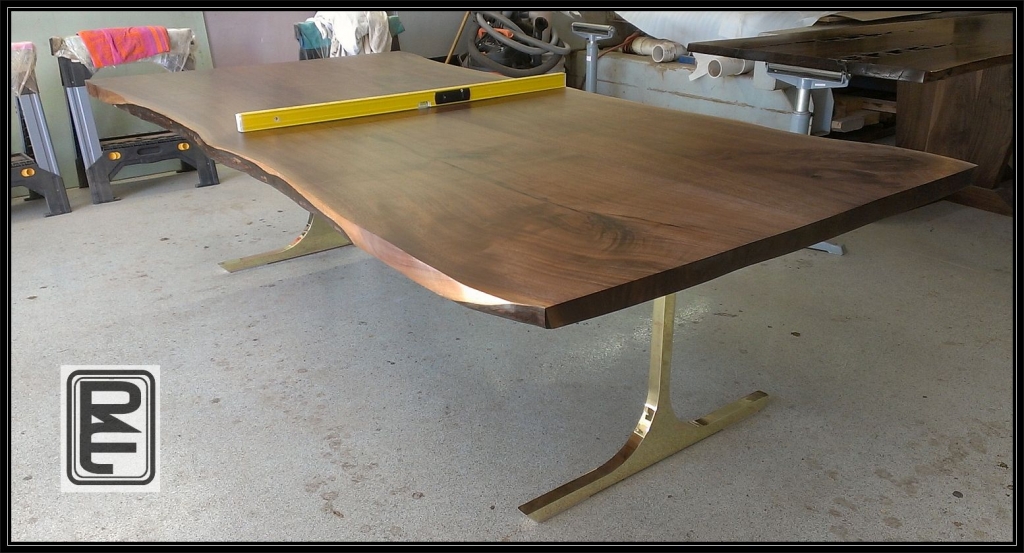
The larger the slab the more it has a tendency to cup or twist during the drying and even after the drying process. It is just unavoidable to have a wide flatsawn piece of green lumber remain perfectly flat as it dries over anywhere from 6 – 36 months depending on your drying process(es). The cells in the wood are collapsing and the internal stresses in the wood change. Once dried, it is poor judgement or just lack of experience to simply lay a slab flat on a table and begin to plane away. And you certainly don’t want to slap it into a wide belt sander. Worse, when you remove material during planing or routing, you relieve some of those internal stresses and what was once a perfectly flat top at the end of the day may “magically” become a cupped top by the next day or worse years later. This is all compounded further when you start combining materials that don’t move (in relative terms) across the 4 seasons in a year. You must account for dimensional changes in one material compared to another or from one orientation to another and build this into your design. It certainly isn’t as easy as drilling a hole and inserting wood screws like so many others are doing. This may work today, tomorrow and even years down the road, but in a few decades or during the next generation of ownership these short sided approaches will result in failure. 99% of all live edge businesses are not thinking about these design attributes from a horizon of decades. The most well known of all is selling $50K+ tables with horrific approaches to assembly and fixation systems. I called a retail location in New York and was told their wood doesn’t move! So just because it has a $10K++ price point does not mean it is or will be highly valuable. Do yourself a favor and look under a Refined Elements table and compare it to 100% of the competition.
In conclusion, it is imperative to have this level of commitment and pure artistry for each and every piece of furniture, if not, the end results will not align with the intended value of a piece. And I don’t care if you are selling a $3,000 piece or a $50,000 piece as it isn’t necessarily the price tag that determines values. It ultimately comes down to the relationship you are able to build crafting a piece and in turn transitioning that deep rooted connection to the rightful owner. If a craftsman is able to do this then by default the piece will be respected, cared for, and enjoyed for generations. If this level of respect is maintained through the years then the value is proportional.

